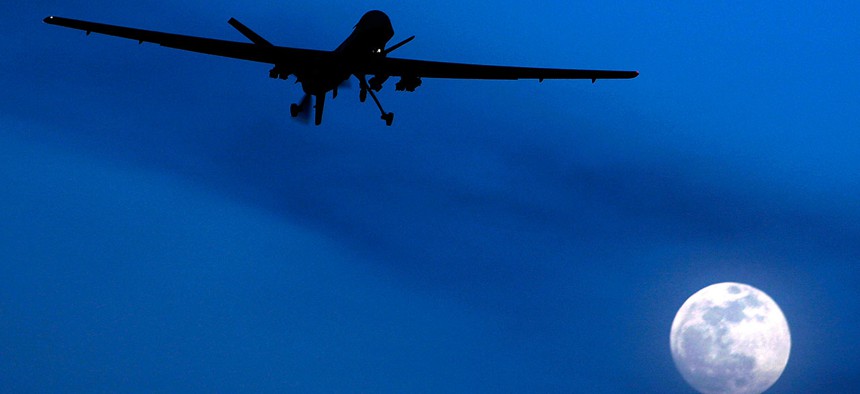
Kirsty Wigglesworth/AP file photo
The Potential Flaw in the NSA's Artificial Intelligence System to Identify Terrorists in Pakistan
It's called Skynet.
Artificially intelligent programs can learn to walk like we do, beat game shows and board games, and even drive cars. But are they ready to find and fight enemies for us?
A new report from Ars Technica suggests that the US National Security Agency (NSA) has been using a machine learning program to identify potential terrorists in Pakistan—but its methodology may have led to thousands of innocent Pakistanis being mislabeled.
The NSA’s program—inexplicably named SKYNET, like the homicidal AI program of the Terminator film franchise—was first unveiled by documents leaked by Edward Snowden to The Intercept in 2015. According to a leaked 2012 government Powerpoint presentation, SKYNET uses “analytic triage” to calculate the probability that individuals are terrorists, using an 80-point analytical test, that evaluates factors like a person’s phone calls, location, social media activity, and travel patterns.
The system apparently flagged Al-Jazeera’s Islamabad bureau chief Ahmad Zaidan as a potential target, the Intercept’s data showed, as he often travels to conflict areas to report.
In the leaked slides, NSA claimed that SKYNET has a false-positive rate of only 0.008%, in certain instances. But Pakistan has a population of about 182 million, and the NSA was using phone records from about 55 million people for SKYNET. As Ars points out, even a that minute rate, many innocent people are likely to end up mislabeled. Some of the NSA’s tests in the leaked slides saw error rates of 0.18%, which could mean mislabeling about 99,000 people out of the 55 million.
SKYNET can be compared to the machine learning systems that businesses use to find sales leads—both methods learn a person’s traits, and compares them to model profiles based on those traits. SKYNET was trained by feeding the system with the data from 100,000 random people, and seven known terrorists. It was then tested with the task of identifying one of those seven terrorists. What’s troubling is that SKYNET does not appear to have been tested with new data, which would have shown whether the system could work in new situations, according to an expert who examined the leaked slides for Ars.
“There are very few ‘known terrorists’ to use to train and test the model,” Patrick Ball, a data scientist and director of the Human Rights Data Analysis Group, explained to Ars Technica. “If they are using the same records to train the model as they are using to test the model, their assessment of the fit is completely bullshit.”
It’s not clear yet what purpose SKYNET serves. Although it could be part of non-violent surveillance activities, such as monitoring suspected terrorists’ travel patterns, Ars suggests the technology could potentially be used to target drone strikes. Since 2004, the US government has carried out hundreds of drone strikes in Pakistan against alleged terrorists, according to the Bureau of Investigative Journalism.
Last year, the UN warned against nations developing autonomous weapons, due to concerns about what they might do without a human’s moral judgement. The NSA was not immediately available to comment on how SKYNET was used, or how it was trained.






